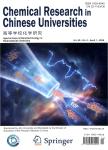Xeno-oestrogens Bisphenol A and Diethylstilbestrol Selectively Activating Androgen Receptor Mediated AREs-TATA Reporter System
Xeno-oestrogens Bisphenol A and Diethylstilbestrol Selectively Activating Androgen Receptor Mediated AREs-TATA Reporter System作者机构:Dental Hospital Jilin University Changchun 130041 P. R. China Institute of Genetics and Cytology School of Life Sciences Northeast Normal University Changchun 130024 P. R. China Department of Public Health Tohoku University Sendai 980-85 76 Japan Department of Nutritional Sciences Morioka University Morioka 020-0183 Japan
出 版 物:《Chemical Research in Chinese Universities》 (高等学校化学研究(英文版))
年 卷 期:2013年第29卷第3期
页 面:512-518页
核心收录:
学科分类:0710[理学-生物学] 071010[理学-生物化学与分子生物学] 081704[工学-应用化学] 07[理学] 08[工学] 0817[工学-化学工程与技术] 0703[理学-化学]
基 金:Supported by the Ministry of Science and Technology, China 国家教育部项目 the Jilin Provincial Science & Technology Department, China Changchun Science & Technology Department, China
主 题:Androgen receptor Xeno-oestrogen Transactivition Androgen response element
摘 要:We cloned the three androgen response elements(AREs, including AREI, AREII, and AREIII ) with a core transactivation TATA element of the prostate-specific antigen(PSA) promoter into pGL2 basic vector to create an artificial pGL2/AREs-TATA reporter system, which was applied to evaluating the effects of different xeno- oestrogens[bisphenol A(BPA), 4-nonylphenol(4-NP), dichlorodiphenyl trichloroethane(DDT) or diethylstilbestrol (DES)] on androgen receptor(AR) abnormal activation to regulate PSA expression and cell proliferation. In all the three AREs, AREIII-TATA displayed as a major element responsive to AR-mediated DHT stimulation of PSA promoter. Therefore, pGL2/AREIII-TATA reporter was adopted to analyze the activation capacity of AR activated by four different xeno-oestrogens. The activation of pGL2/AREIII-TATA reporter by each xeno-oestrogen was analyzed in two different cell lines, one was HEK293T(Human Embryonic Kidney 293T) cell line, and the other was AR stably expressed DU145 cell line, which was produced by infecting AR with pLenti-puro-AR into the prostate cancer DU145 cells and that were scanned with puromycin and tested by AR antibody. In both the two cell lines, BPA or DES significantly induced AR-mediated transcriptional activity of AREIII-TATA reporter, whereas DDT or 4-nonylphenol did not. Moreover, AR-mediated cell proliferation in response to each of four xeno-oestrogens was measured in MTT assays in both HEK293T cell or AR stably expressed DUI45 cell lines. BPA or DES, as an AR inducer, exhibited an enhanced effect in cell proliferation, rather than the effect of DDT or 4-NP, in both cell lines. Finally, we demonstrated that BPA or DES stimulated PSA expression and enhanced the recruitment of AR onto the PSA promoter, resulting in stronger binding to AREIII sites. Taken together, four xeno-oestrogens were identified to have different activities on AR. BPA and DES are demonstrated to be androgenic effectors in the regulation of PSA activation or ce



